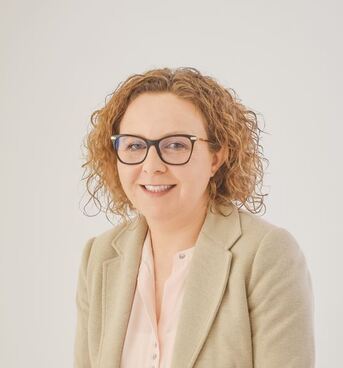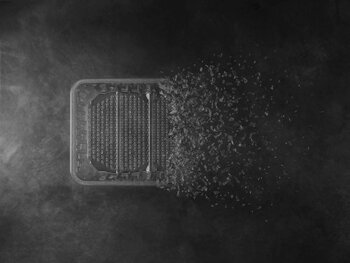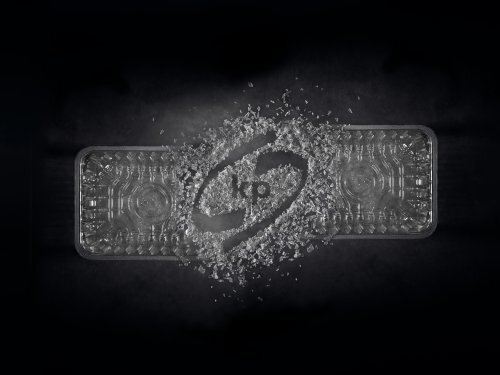
Value chain collaboration is key to closing the loop
Carla Alves, Group Procurement Manager RPET Europe
As a company with sustainability incorporated into everything we do, we’re constantly striving to create products that push today’s version of closed loop further. Our ethos and strategic approach drive us to design new, recyclable products and to close the loop by using more recycled material in their production.
But I often wonder what it will take to get all manufacturers on a more level playing field. What will be the biggest drivers to a circular economy where plastic is a renewable resource and not thought of as waste? I think it will require a combination of innovation, legislation, transparency, and collaboration.
Share this story
Innovation
Whilst responding to market and regulatory demands, kp is always looking to push harder as we deliver upon our promise to the world – the sustainable protection of everyday needs. We support the latest developments in packaging, and I’m proud that we always want to be one step ahead. But we also know it is only when we work in partnership with our customers, consumers, and regulators that we can drive impactful change.
Our desire to take responsibility for our products after they leave the factory floor is part of why I enjoy my role as Group Procurement Manager rPET Europe at kp. For many years, we’ve been supporting our customers to maximise waste as a resource, and to include more and more recycled content in their packaging. We’ve been using post-consumer recycled PET for nearly two decades, to produce high-quality products that meet global safety standards and consumer expectations. We’re also maximising recycled content across our product lines – replacing recycled content from bottles with recycled content from trays is at the heart of our kp Tray2Tray® programme.
Food packaging needs to be functional and protect the items inside to extend shelf life and reduce food waste – when innovating we never compromise on this.
Right now I’m very focused on exploring, and driving forward how kp can increase the volume of rPET in our food trays and rigid films. PET is a really prevalent plastic in our lives and can be found in lots of food and beverage bottles – mainly because it is a highly versatile material due to its thermoplastic and lightweight properties which means it has good resistance to chemicals and is strong and durable.
Using rPET helps create a circular economy by keeping materials that have already been extracted from the earth in circulation. rPET is a valuable resource, reincorporating it, saves energy, and resources, and reduces the volume of plastic going to landfill and incineration.
kp Tray2Tray®
We are on a mission to recover used food packaging and turn it back into more of the same. Thanks to kp Tray2Tray®, our plastic trays and rigid films can come back time and again as safe, protective, fully recyclable food packaging.
kp Tray2Tray®Legislation
With growth of the global rPET market driven by many factors, which include increased demand for sustainable packaging and growing awareness of environmental issues we also need to remember that the global rPET market is segmented on the basis of type, application, and region.
Legislation like the EU Packaging and Packaging Waste Regulation (PPWR) will help build a circular economy for packaging. Whilst currently only a proposal, if approved it would mean that by 2030 all packaging on the EU market would need to be designed to be recyclable. Then by 2035, you would need to demonstrate that your packaging is recycled at scale – which requires having the appropriate recycling infrastructure in place. And based on the current proposal, mandatory use of PCR in plastic packaging would come into force in 2030. I welcome regulation like this as it will help reduce waste, and create a stronger market for recycled plastics and innovative packaging. A win-win. And in fact, kp has been helping the market and product development.
We supply food grade recycled content and are ready to help customers take a proactive approach to meet the requirements of PPWR, whilst guaranteeing food safety regulation compliance with new regulations in place, i.e. 2022/1616.
We supply food grade recycled content and are ready to help customers take a proactive approach to meet the requirements of PPWR, whilst guaranteeing food safety regulation compliance with new regulations in place, i.e. 2022/1616.
Transparency
To ensure real progress, I believe we all need to be honest with ourselves and with each other about how well we’re doing. And talk about the hurdles and problems that may be standing in the way of us hitting certain targets.
Collaboration
Let’s do this!

For example changing the attitude towards optics will have a strong role to play. Among manufacturers, I believe there is a slow acceptance of plastic packaging that isn’t crystal clear or may have a greyish appearance. Now we just need more purchasers of packaging to get on board with the changing standards when it comes to optics as this will really increase the amount of post-recycled content manufacturers can include in products. Whilst I expect the industry will see many changes over the coming years, I’m also confident that changing consumer demands will help us accelerate to a more sustainable future.
Ultimately, for us to be able to take great strides when it comes to sustainability, we need to consider ourselves partners in a better future. We need to work with our manufacturers, our customers, and the consumers at the end of the chain to fully close the loop. Alone we can’t move the market, but we can work with the market to drive competition. It is a big task, but one that team kp is up for!








